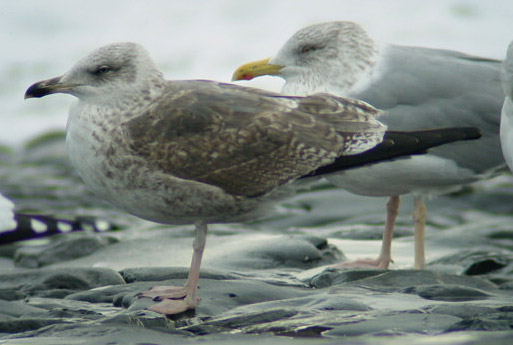 Lesser Black-backed Gull (graellsii & intermedius)
Lesser Black-backed Gull (graellsii & intermedius)
(last update: May 17 2015)
lbbg 1cy May
lbbg 1cy June
lbbg 1cy July
lbbg 1cy August
lbbg 1cy September
lbbg 1cy October
lbbg 1cy November
lbbg 1cy December
lbbg 2cy January
lbbg 2cy February
lbbg 2cy Mar-April
lbbg 2cy May
lbbg 2cy June
lbbg 2cy July
lbbg 2cy August
lbbg 2cy September
lbbg 2cy October
lbbg 2cy Nov - Dec
lbbg 3cy Jan-April
lbbg 3cy May
lbbg 3cy June
lbbg 3cy July
lbbg 3cy August
lbbg 3cy September
lbbg 3cy October
lbbg 3cy Nov - Dec
lbbg sub-ad Jan-April
lbbg sub-ad May
lbbg sub-ad June
lbbg sub-ad July
lbbg sub-ad Aug
lbbg sub-ad Sept
lbbg sub-ad Oct
lbbg sub-ad Nov
lbbg sub-ad Dec
lbbg adult January
lbbg adult February
lbbg adult March
lbbg adult April
lbbg adult May
lbbg adult June
lbbg adult July
lbbg adult August
lbbg adult September
lbbg adult October
lbbg adult Nov - Dec
LBBG 3cy, January 05 2001, Westkapelle, the Netherlands.

Here a second winter bird (3cy bird by January!). The new second generation primaries are all without a white tip and tar black coloured.
The bill, legs and iris are still immature. The greater coverts, lesser coverts, most tertials and a few scapulars are older second generation feathers. The new third generation feathers can be found in the medians and the inner greater coverts, the upper tertials and most of the scapulars. These third generation feathers are grey-brown based with paler tip, show a brown sub-terminal band and two or three brown bands. Its not said that all third generation feathers will be of this type coming spring. Third generation greater coverts may appear as adult-like coverts when moulted last in line (contrasting with the earlier moulted median coverts of the same generation).